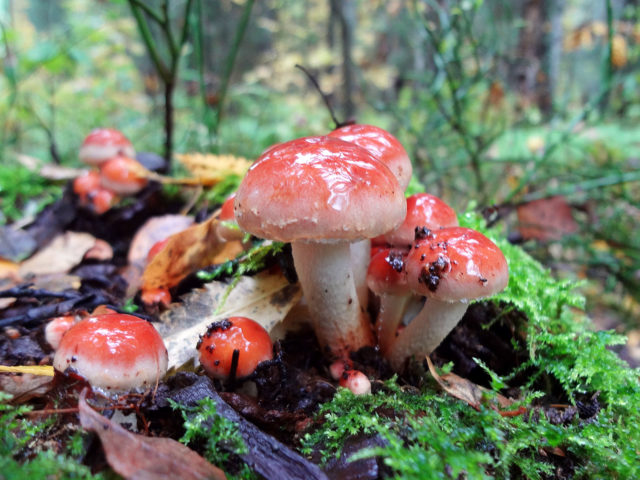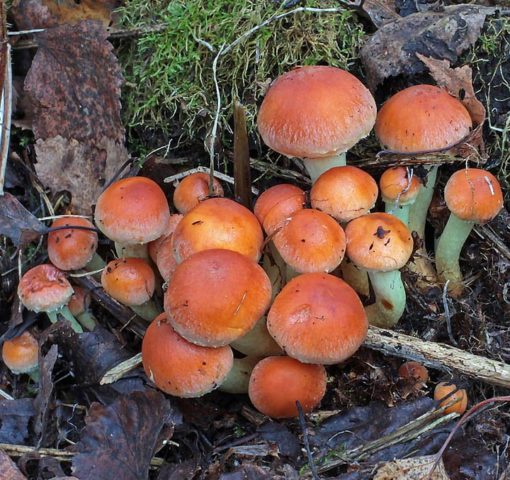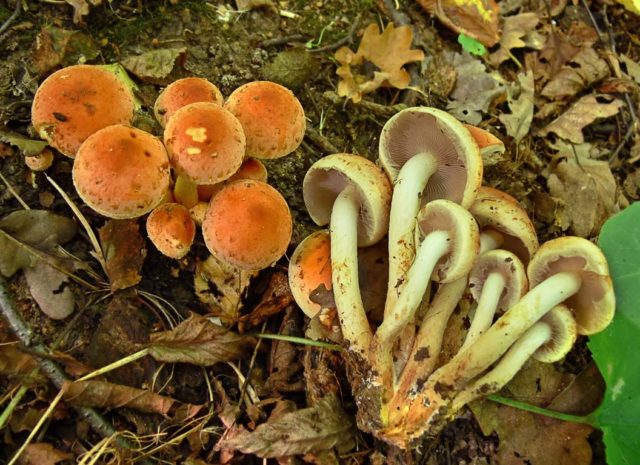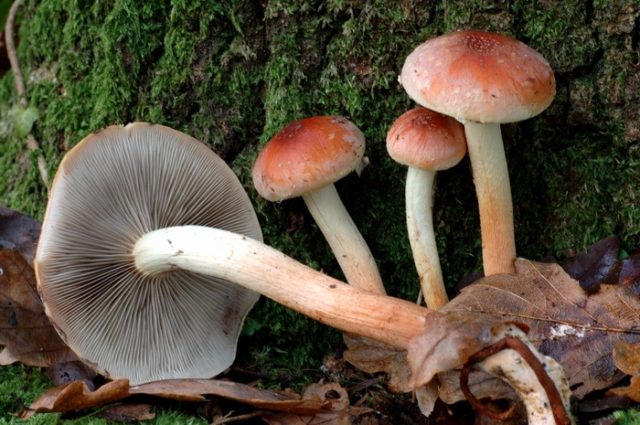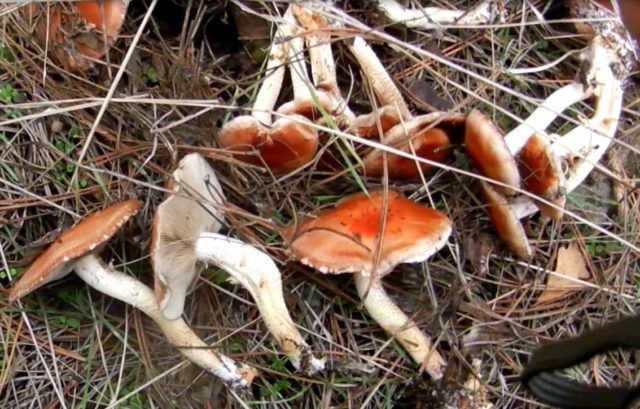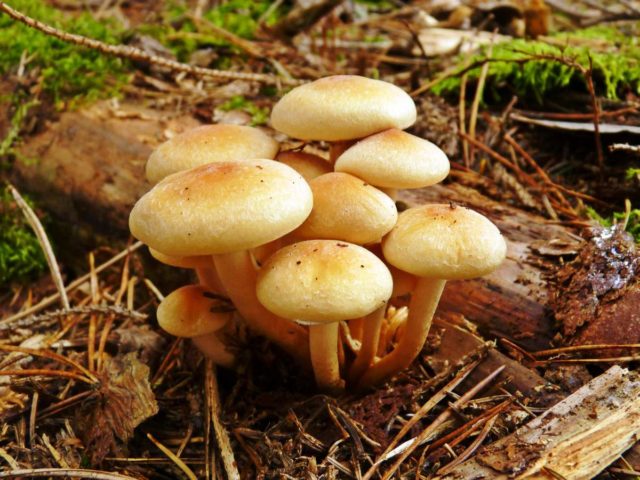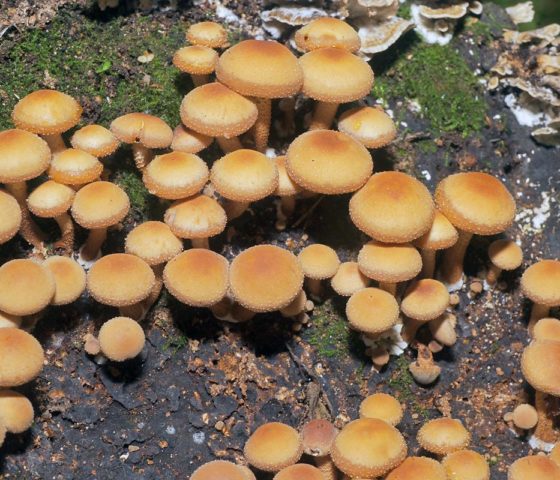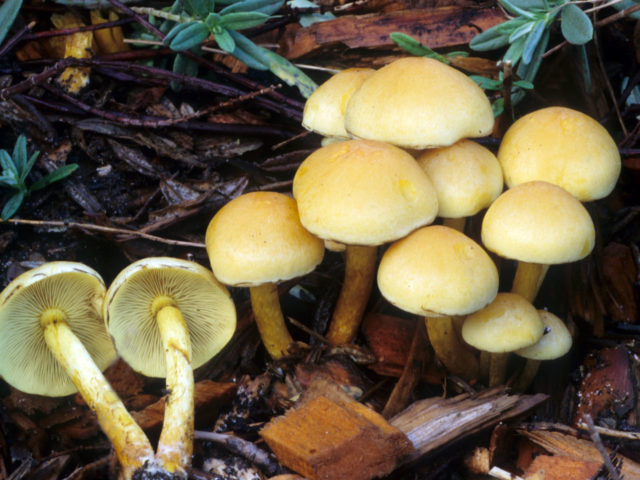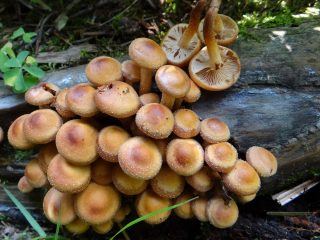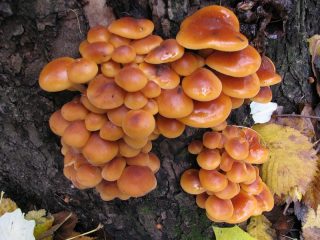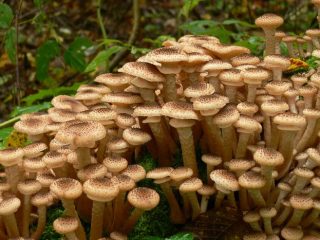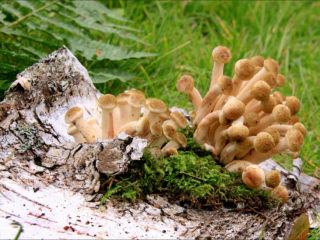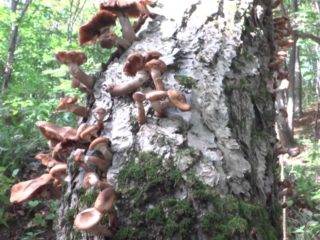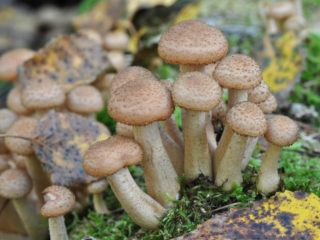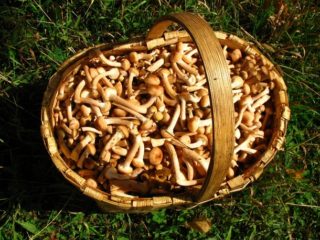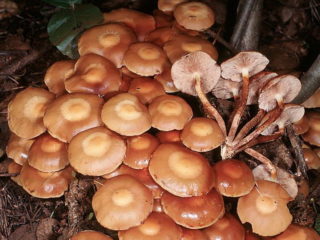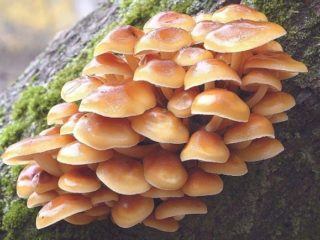Content
At the same time as autumn honey mushrooms, brick-red false honey mushrooms begin to bear fruit on stumps and rotten wood, misleading mushroom pickers, especially inexperienced ones. Therefore, it is so important to know the distinctive features of this species and everything about the possibility of using it for food.
Are honey mushrooms red-brick in color?
Just like other mushrooms, honey mushrooms have many false varieties that can be both edible and poisonous. The brick-red false honey fungus differs from other representatives of the Strophariev family in the rich color of its cap. This is a fairly common mushroom that grows at the same time as autumn mushrooms, in the same places - on stumps and fallen trees.
Photo of brick-red honey mushroom in natural growing conditions:
Description of brick-red honey mushrooms
The brick-red false honey fungus belongs to the Strophariaceae family, has dense white flesh with a yellowish tint and a rather pleasant mushroom aroma. This type tastes a little bitter. Its plates are located frequently, grow to the stem and are white in young specimens and gray-brown in adult, overripe specimens. Brick-red false honey fungus grows in groups of representatives of different ages, as can be seen in the photo.
Description of the cap
The round-convex, spherical cap of red-brown color opens with age and takes on a half-prostrate, or in some cases, flat appearance. There is a small tubercle in the center. The cap, up to 9 cm in diameter, in young individuals subsequently grows to 13 - 14 cm, has a more saturated color towards the center and a yellowish tint at the edges. Often the edges of the cap are covered with rusty spots. Its surface is brick-red - dry and smooth.
Description of the leg
The leg of the false honey fungus is cylindrical in shape, high - 6 - 13 cm, and in diameter - up to 1.5 cm. At a young age it is solid, but over time it becomes hollow. At the base it has a dark, brown-brown color, and becomes lighter at the top, it can be straight or slightly curved, widened at the top.The ring characteristic of autumn mushrooms is missing, but the remains of the bedspread can form a ring-shaped pattern.
The leg and cap of the brick-red honey mushroom can be seen in the photo:
This video will help you get acquainted with this type of false honey:
Where and how does it grow
Brick-red false honey fungus grows everywhere - its range extends to the central regions of Russia, the Far East, the Urals, and Siberia. It also grows in Europe and North America. Prefers mixed or deciduous forests, roots of fallen trees - birch, alder or aspen; stumps covered with moss. It is rarely found alone; it grows in large groups, even colonies. Its active growth begins in August and continues throughout the fall, until the onset of cold weather.
Is the brick-red honey fungus edible or not?
Opinions about the edibility of red brick honey fungus remain controversial. In Russia, in some regions it is considered inedible and even poisonous, in others it is considered conditionally edible. In Europe, Germany and Italy, this mushroom is widely eaten after preliminary heat treatment - soaking and boiling. Prepared brick-red false honey mushrooms are pickled, salted or used for main courses.
How to prepare brick-red honey mushrooms
In Europe and Japan, brick red false honey mushrooms bred on an industrial scale. In Russia they are considered conditionally edible, so the mushroom needs special processing before cooking.Brick-red mushrooms are washed well, soaked for 10 minutes and boiled for 30 minutes in salted water. The broth is drained and not used for food. After this, the mass is marinated or fried with the addition of onions.
Why are brick mushrooms useful?
The beneficial properties of brick-red honey mushrooms are:
- general strengthening of the body;
- increasing immunity;
- normalization of metabolism;
- lowering blood pressure levels;
- calming effect on the nervous system;
- anti-inflammatory properties;
- removal of harmful cholesterol;
- improving performance.
Regular consumption of this variety is an excellent prevention of the development of malignant tumors. Collected in the fall, they have a laxative effect and also have a beneficial effect on the functions of the thyroid gland. Low calorie content makes it possible to widely consume brick-red mushrooms during diets.
In oriental medicine they are highly valued for the presence of components that prevent the development of sarcoma. Therefore, in the East, medicines against cancer, for the treatment of stomach ulcers and liver diseases are made from honey mushrooms. According to their properties, they are natural antibiotics and antioxidants. Brick-red representatives of the forest kingdom are also used to make cosmetics: lotions, creams, masks that help smooth, reduce skin dryness and eliminate flaking.
Doubles and their differences
The brick-red false honey fungus has many counterparts: both inedible and edible species.
Among them:
- Seroplate or poppy pseudofoam. This edible variety grows in coniferous forests and is characterized by a yellow-orange cap when young, which becomes brick-red with age.
- Summer honey fungus. It is distinguished by the pale gray color of the cap, which is brown in the center. The fringe on the leg is completely absent. This mushroom is edible, but has an unpleasant odor.
- Sulfur-yellow honey fungus. It has a yellowish-brown cap with a brick-red center. It grows in deciduous and coniferous forests. It is a poisonous mushroom.
- Bordered gallery. This poisonous variety is characterized by a membranous ring on the stalk in juveniles and a edging around the edge of the cap. This species grows only in deciduous forests.
Conclusion
Brick-red false honey fungus is not as popular as autumn honey fungus, however, it has its value not only gastronomically, but also in healing and cosmetological terms. In order not to confuse it with other representatives of the mushroom family, you need to be careful and careful.
